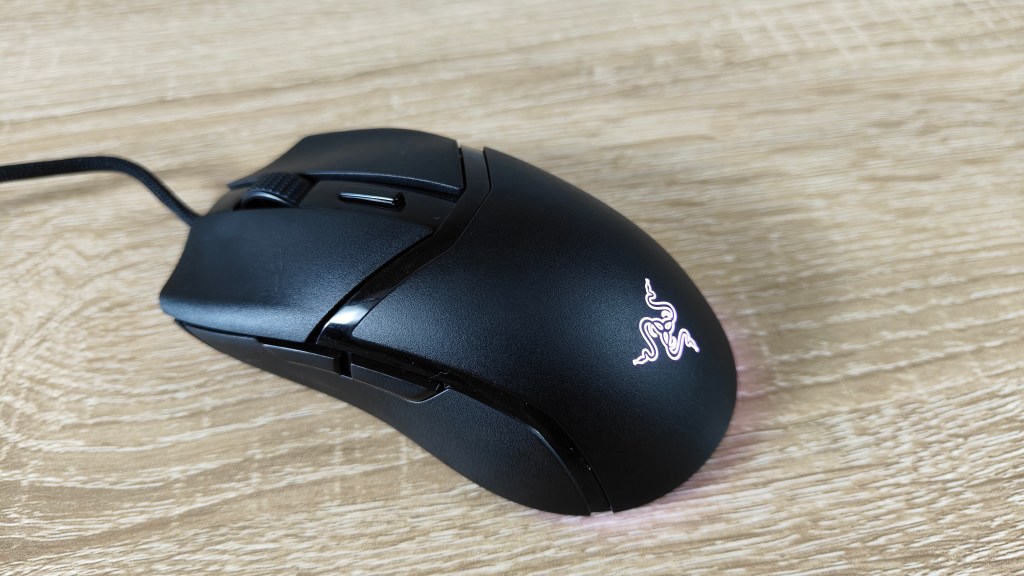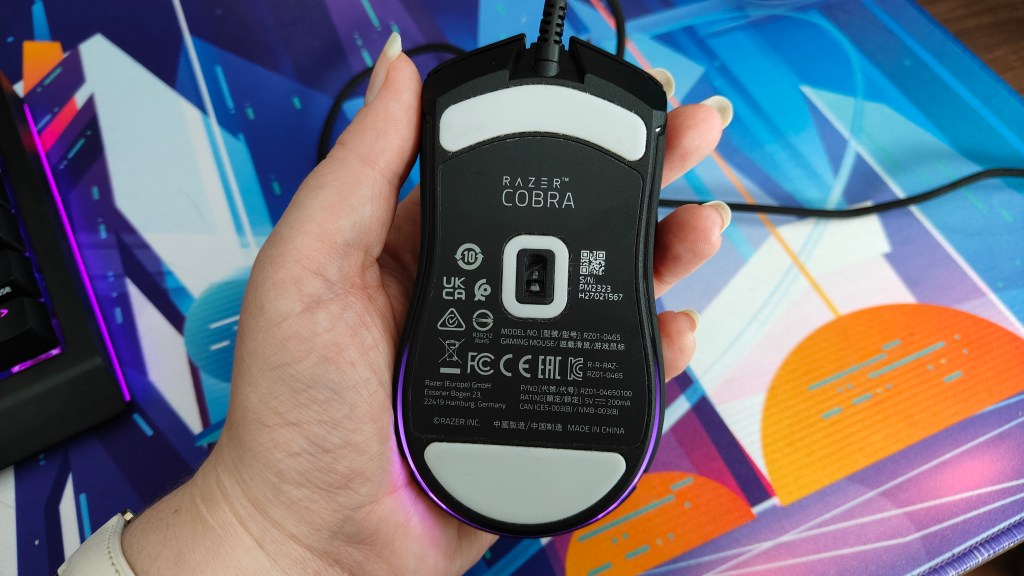In its arsenal of gaming mice, Razer offers a variety of options for different types of gamers and budgets.
The Cobra line focuses on providing a small form factor with the right gaming features for ordinary gamers. The most affordable of these is the standard Razer Cobra. But how does it stand up in real life?
Design
The Razer Cobra features a lightweight design for those who want to be able to easily glide it across a surface with minimal effort. At around 58 grams, it achieves a light form factor without feeling cheap.
The symmetrical design is both stylish and comfortable to hold in the hand, allowing for long play sessions where you don’t have to worry about hand strain.

While the design has been compared to the Viper, there are a few differences which would make me choose the Cobra over it when comparing aesthetics. Not only is the Cobra lighter, but it also features larger right and left mouse buttons. The DPI button is also larger, making it easily accessible even when you’re already in a game.
The Cobra has two programmable buttons on the left side, meaning it’s only compatible with a right-hand grip. You can re-bind these keys, along with the middle scroll wheel, using Razer Synapse. You can even rebind the right and left mouse click buttons, and the DPI button, if you want to.

The design is sleek and understated, featuring just a touch of RBG behind the Razer logo on the mouse’s palm rest, along with an RGB underglow at the base of the mouse. Using Synapse, you can also sync the mouse’s RGB with other Razer accessories. In this case, I used it alongside the Blackwidow V4 75%.
The mouse is wired, and while I prefer wireless mice due to the freedom of movement they provide, the switch to wired isn’t cumbersome with the Cobra. The braided cable is long enough to give you extensive freedom of movement, and it’s lightweight enough that it doesn’t create drag.
This is helped by the mouse’s PTFE feed, which glide easily across different surfaces.
Performance

So how well did the mouse perform? The mouse comes with a polling rate of up to 1000Hz, which is suitable for the majority of gamers, ensuring the mouse is responsive across a variety of game genres.
The maximum DPI is 8500, but I found myself using it at 3200 DPI most of the time. This sensitivity worked well for a variety of games, along with regular daily usage such as writing and internet browsing.
In terms of moveability, I tested the mouse on both a fabric desk mat and a bare, wooden table surface. While movement was smoother on the desk mat, it was still relatively smooth on the desk surface too, though there was a bit more drag due to the texture of the wood.
Even though the base of the mouse picked up some cat hair, including around the sensor, it continued to perform well with exceptional accuracy.

The mouse buttons themselves use Razer Optical Mouse Switches Gen-3, which provide responsive input along with a satisfying click.
Razer Synapse also allows you to save a profile to the mouse, but the limit of 1 profile might be a drawback for gamers who want to save profiles that apply to a variety of scenarios and gaming genres.
Review verdict: Is the Razer Cobra worth it?
The Razer Cobra provides speed, reliability, and durability, while also incorporating a stylish design with a little bit of flair. If you’re looking for a standard gaming mouse that allows for customization and easy sensitivity adjustment, the Cobra is a great product.
If you’re looking for something with slightly more bells and whistles, there’s also the Razer Cobra Pro. But that puts you in a totally different price bracket.
The standard Razer Cobra is available for around R1000, depending which online retailer you opt to buy it from. You can find out more about it on the Razer website.
